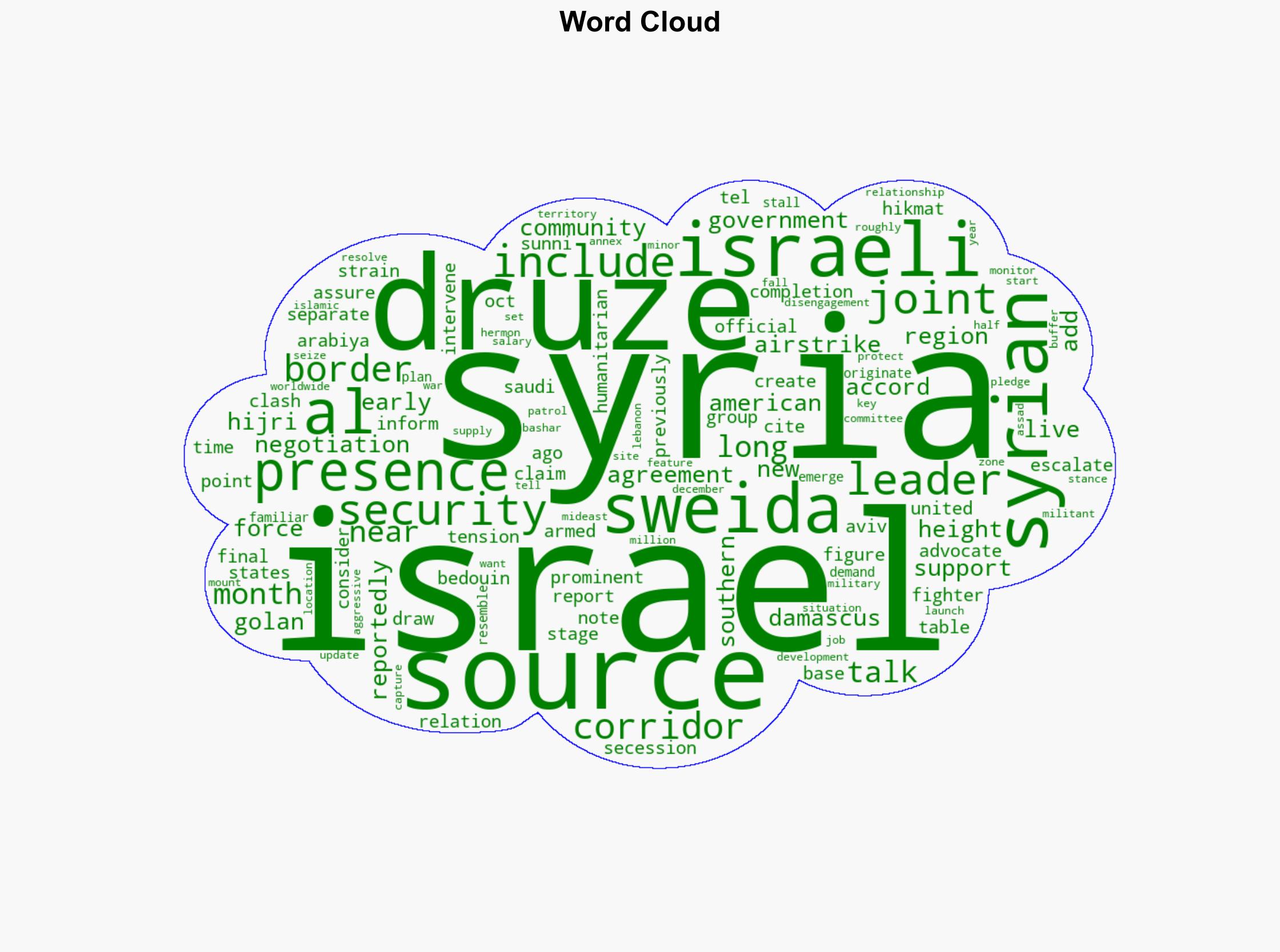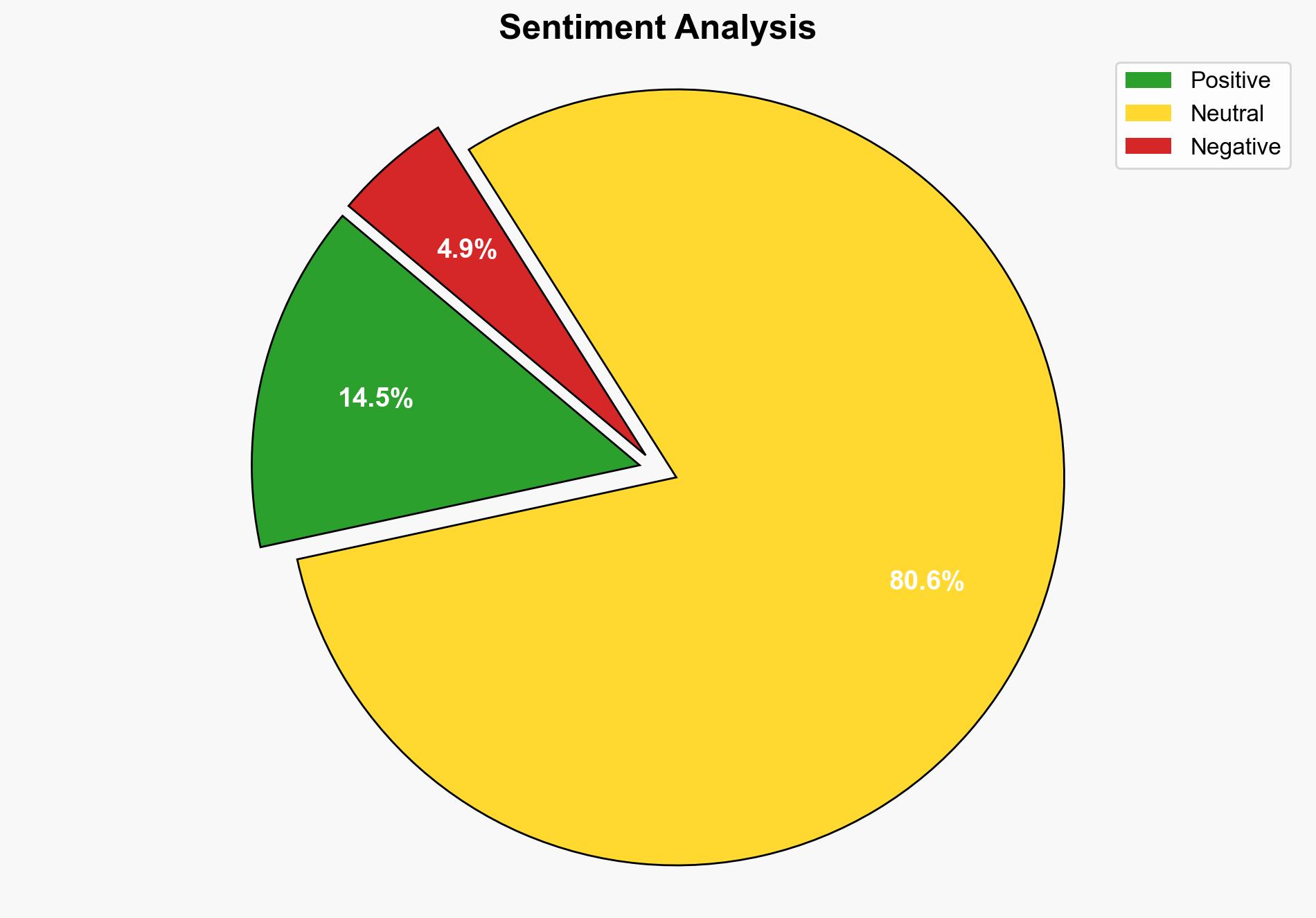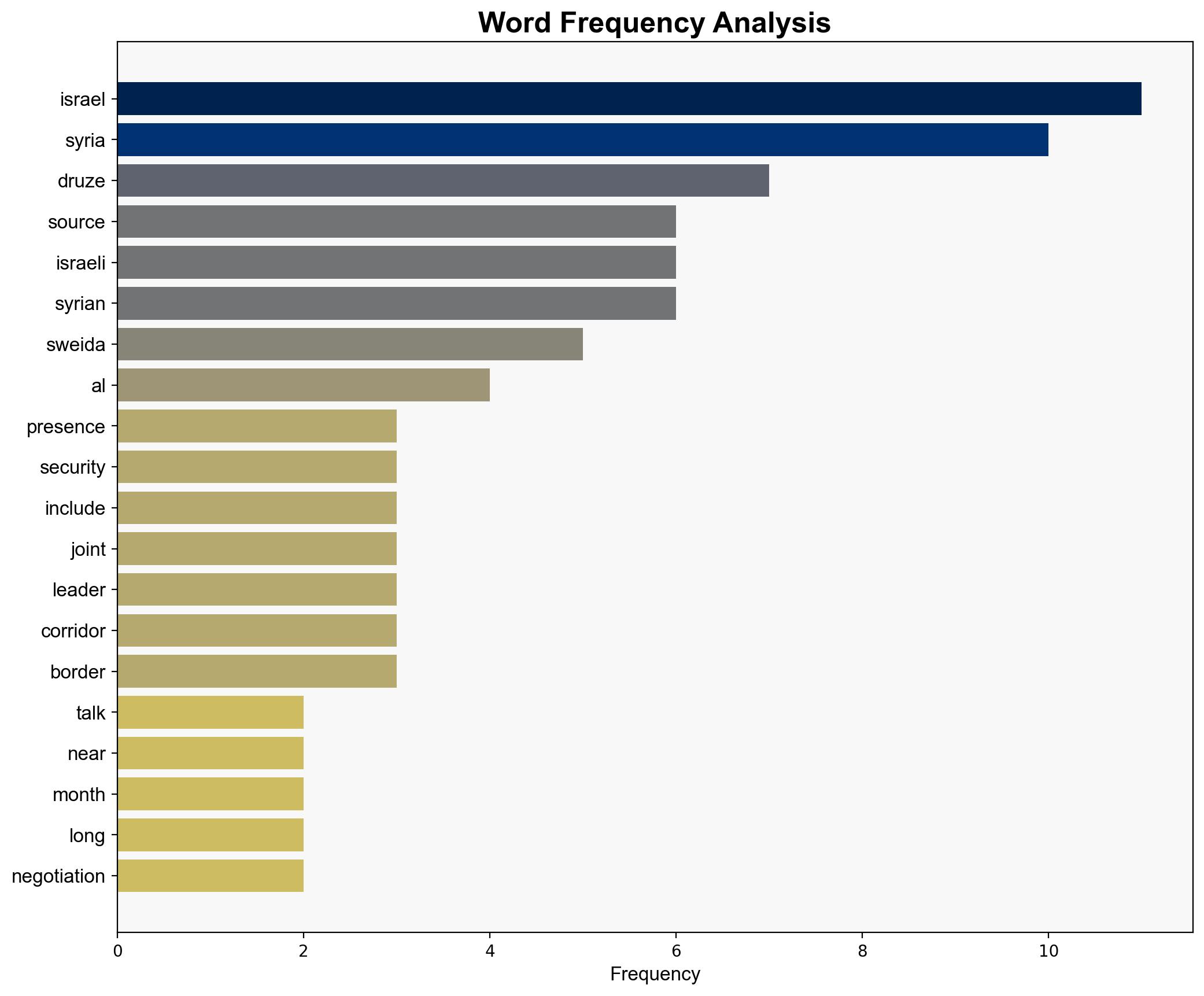Syria Israel talks near completion presence on table Source – Hurriyet Daily News
Published on: 2025-10-29
Intelligence Report: Syria Israel talks near completion presence on table Source – Hurriyet Daily News
1. BLUF (Bottom Line Up Front)
The most supported hypothesis suggests that Syria and Israel are nearing a security agreement involving a joint presence, potentially stabilizing the region but with significant risks of escalation if not managed carefully. Confidence Level: Moderate. Recommended action is to closely monitor developments and prepare contingency plans for potential regional instability.
2. Competing Hypotheses
Hypothesis 1: The negotiations will lead to a successful security agreement involving joint Israeli-Syrian presence, which will stabilize the region and protect the Druze community in Sweida. This hypothesis is supported by reports of near-completion talks and assurances given to Druze leaders.
Hypothesis 2: The negotiations will fail or result in a superficial agreement that does not lead to actual cooperation, potentially exacerbating tensions in the region. This is supported by historical mistrust, the complexity of involving multiple parties (Israel, Syria, the U.S.), and potential opposition from regional actors like Iran.
3. Key Assumptions and Red Flags
– Assumption: Both Israel and Syria are genuinely committed to the agreement and have the capacity to enforce it.
– Red Flag: The involvement of multiple parties and historical animosities could lead to breakdowns in trust and implementation.
– Potential Bias: Over-reliance on Israeli sources could skew the perception of Syrian intentions.
– Missing Data: Lack of Syrian official statements confirming the details of the agreement.
4. Implications and Strategic Risks
– A successful agreement could reduce military tensions and create a framework for future cooperation.
– Failure or superficial agreements could lead to increased hostilities, particularly involving proxy groups and regional powers.
– Economic implications include potential disruptions to regional trade routes.
– Geopolitical risks involve the reaction of Iran and other regional actors who may feel threatened by increased Israeli influence.
5. Recommendations and Outlook
- Monitor the situation closely, focusing on both official statements and actions on the ground.
- Engage with regional allies to prepare for potential fallout from failed negotiations.
- Scenario Projections:
- Best Case: Successful implementation leads to regional stability and improved relations.
- Worst Case: Breakdown in talks results in increased military conflict and regional instability.
- Most Likely: Partial implementation with ongoing tensions and sporadic conflicts.
6. Key Individuals and Entities
– Hikmat al Hijri: Prominent Druze leader in southern Syria.
– Bashar al-Assad: Syrian leader whose stance and actions will significantly impact the outcome.
7. Thematic Tags
national security threats, regional stability, Middle East diplomacy, geopolitical strategy




